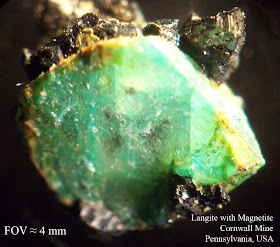Pretty much all of the time when researching fossils found in southern Indiana and northern Kentucky of the United States one finds text full of dry scientific descriptions and terms that are difficult to decipher in relation to the specimen being looked at. An exception was found while reading the
Indiana Department of Geology and Natural History Seventeenth Annual Report S.S. Gorby State Geologist 1891 on pages 661-662 in the Palæontology section by S.A. Miller. In the area labeled Family Rhodocrinidæ,
Goniasteroidocrinus tuberosus, Lyon & Casseday, Mr. Miller lists in the text that the entry about this particular fossil is:
"for the purpose of correcting some erroneous observations that have been made about the arms and arm furrows, and for the purpose of showing that if the arms were turned up, they would be like the arms in other genera and species of crinoids, and that they differ only in the fact that they are directed downward with the arm furrows outward. The arm furrows are well illustrated in the figure, with the pinnules directed downward."
He then goes on to describe a plate placed in the Illinois Geological Survey Volume II on page 219 that shows this species but "is erroneous, because it should show a double series of plates below the bifurcations instead of a single series; and the arms are represented with the furrows against the calyx instead of being turned outward."
The mistake was compounded by a description based on that image by Wachsmuth & Springer in their article in the Proceedings of Academy of Natural Science of Philadelphia, 1878, page 262.
Mr. Miller goes on to state:
I can not understand how any one ever came to the conclusion that a crinoid arm could rotate on its axis. The first plates in an arm are never transverse, beside if they were, the plates were always held in position by ligaments and if the arms were, the plates were always held in position by ligaments and if the arms were made to rotate the ligaments would necessarily be broken and the arms twisted off. But the facts effectually get away with the erroneous supposition and philosophy.
I take pleasure in correcting any mistake [Ed. REALLY?] I find in the palæontological part of the Geological survey of Illinois, because I was an assistant on the work on the 7th volume and was frequently consulted by the late State Geologist, Prof. A.H. Worthen, in regard to palæontological subjects and received numerous courtesies from him, during many years of friendly intercourse. I was also the personal friend of Prof. Meek, who adopted and published the first new variety of fossils I described nearly twenty years ago. There is no palæontological work with which I have more cause to be familiar than with that contained in the Geological Survey of Illinois. And yet, in a recent diatribe, by an English schoolmaster, named P. Herbert Carpenter, I am told that "It is not too much to expect" that I should make myself acquainted with the "Illinois Geological Reports."
What caught my eye was the talk about a diatribe by an English schoolmaster. So I looked up the name on the Internet and found an entry for Philip Herbert Carpenter on
Wikipedia. He was born in 1852 and educated at University College School, University College London, and Trinity College in Cambridge. He was a naturalist on several ocean expeditions in 1868, 1869-1870, and 1875. Dr. Carpenter was expert on modern and fossil crinoid morphology.
As it turns out Dr. Carpenter probably never saw Mr. Miller's comments as the survey was not published till 1892 and Dr. Carpenter killed himself on October 21, 1891. The doctor died as described on Wikipedia as "by self-administration of chloroform during a bout of temporary insanity caused by chronic insomnia." Yikes! This sounds like something like what happened to super-star singer Michael Jackson. Trying to get some rest by the use of a potent drug that can kill if taken too much of.
Sadly, according to this
article from March 1892 entitled "Sleeplessness and Suicide", he left a widow and 4 young children.


















































